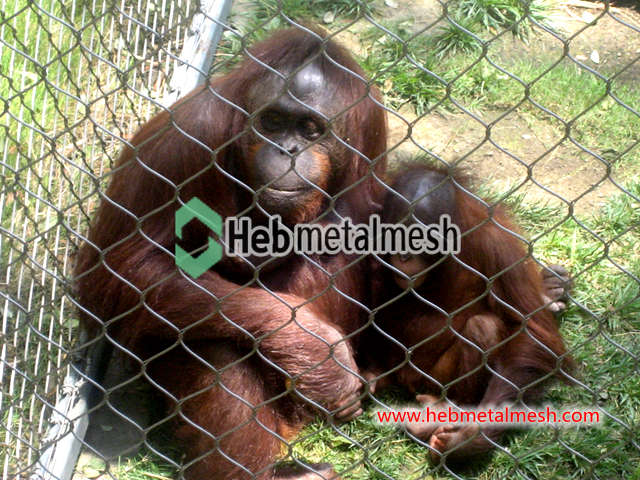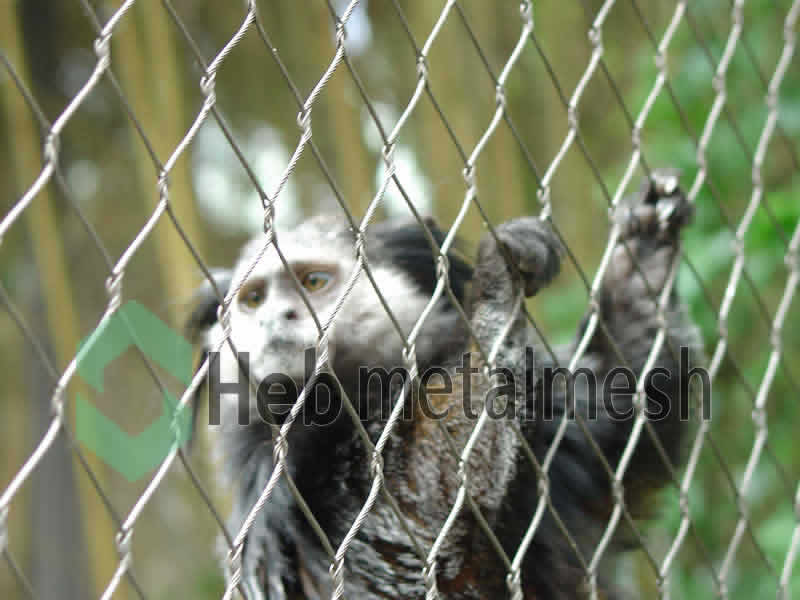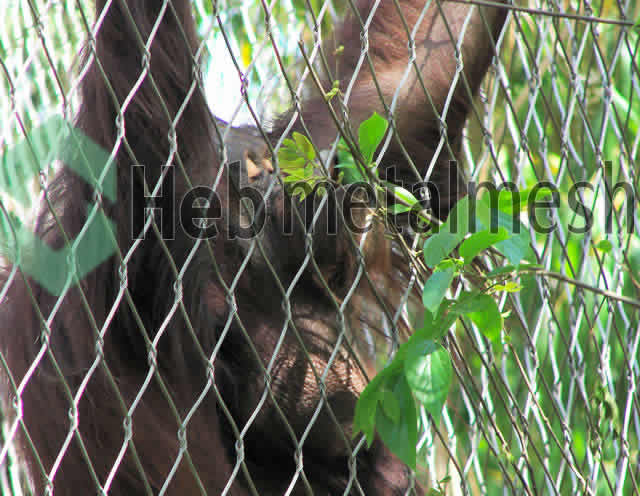Introduction
The boundary between human infrastructure and the natural world is often marked by a simple structure: the fence. For centuries, fences have served essential purposes, defining property lines, securing livestock, and protecting crops. Yet, these seemingly innocuous barriers create a profound and often fatal conflict with wildlife movement. A traditional fence, whether barbed wire or rigid mesh, can instantly transform a vital migratory route into a deadly hazard, slicing through the fabric of local ecosystems.
The problem is significant: traditional fencing acts as a major barrier for animals, leading to widespread habitat fragmentation, debilitating injury, and often, population decline. Animals get caught in wire, struggle to cross, or are forced into dangerous areas. The imperative to protect both human interests and biodiversity has never been clearer. This is where the concept of wildlife friendly fencing emerges—a sustainable and ethical solution designed to harmonize human boundaries with the needs of nature. This guide will explore the critical importance of wildlife friendly fencing, its core principles, various design types, and how to choose the right materials—like innovative stainless steel zoo mesh from Hebmetalmesh—to create a safe, durable, and effective barrier that supports ecological balance.
Why Wildlife Friendly Fencing is an Ecological Imperative
The deployment of conventional fencing across landscapes has created an invisible, extensive net of barriers that severely impedes natural processes. Understanding the negative impacts of traditional fencing is the first step toward implementing responsible alternatives. Fences are not just inert lines on a map; they are active determinants of ecological health.
The Problem of Habitat Fragmentation
The most devastating impact of ill-designed fencing is habitat fragmentation. As human development spreads, fences dissect continuous landscapes into smaller, isolated patches. This blocks natural wildlife corridors, which are essential pathways animals use for daily foraging, seasonal migration, and dispersal to find new mates and avoid inbreeding. When these corridors are cut off, populations become genetically isolated, less resilient to disease, and ultimately, face a higher risk of local extinction. A fence that prevents a deer from reaching a winter foraging ground or a reptile from accessing a breeding wetland jeopardizes the long-term viability of the species.
Threats of Injury and Mortality
Traditional fencing poses immediate and lethal fencing threats to wildlife. Barbed wire is notorious for causing gruesome injuries; animals attempting to jump over, crawl under, or push through can suffer deep lacerations, broken bones, and fatal internal damage. Even standard woven-wire or rigid panels can cause animal entanglement, particularly for species like birds, bats, and smaller mammals. Animals often die from strangulation, exhaustion, or being exposed to predators while caught. These mortality events are preventable and represent a massive, overlooked toll on wildlife populations worldwide.
The Ripple Effect on Biodiversity
The consequences extend beyond individual animal trauma. Each injury and death contributes to a decline in local animal numbers, creating a severe ripple effect on biodiversity conservation. When keystone species or essential predators cannot move freely, the entire ecosystem balance is affected. For instance, the inability of large herbivores to graze in certain areas can lead to overgrowth in others, changing vegetation structure and impacting insect and bird populations. By prioritizing protecting ecosystem balance through responsible boundaries, we mitigate these secondary ecological collapses, ensuring that landscapes remain functional and healthy. The need to transition from hazardous boundaries to wildlife friendly fencing solutions is therefore an ecological imperative.
Designing for Coexistence: Key Principles of Wildlife Friendly Fencing
Moving beyond the recognition of the problem, ethical fencing design requires adherence to a set of core principles that prioritize animal safety and movement. These principles ensure that a barrier fulfills its function for human needs without compromising the lives and natural behaviors of local fauna.
Visibility and Avoidance
A fence cannot protect wildlife if the animal cannot see it. This principle centers on visible fencing for wildlife to facilitate preventing animal collisions. Fences, particularly single strands of wire or dark mesh in low light, are often invisible to fast-moving animals like deer and elk until it is too late. Solutions include adding visibility markers, such as bright plastic tabs, reflective flags, or wooden rails, to make the fence line obvious. Highly visible fencing, particularly at the top and bottom of the barrier, gives animals the necessary time to perceive the obstacle and alter their course, greatly reducing the risk of impact or entanglement.
Permeability and Passage
Permeability refers to the fence’s ability to allow different-sized animals to pass. True wildlife-friendly fencing is not an absolute wall but a semi-permeable boundary. This means creating specific allowances to facilitate allowing wildlife passage over, under, or through the fence line.
- For small animals (e.g., turtles, lizards, small rodents), this requires maintaining sufficient ground clearance (often 12–18 inches) or installing specialized wildlife passes.
- For medium-sized animals (e.g., coyotes, badgers), the fence should be designed to accommodate easy passage underneath or should have ‘jump-through’ sections.
- For large mammals, the bottom wire should be smooth and high enough to allow them to crawl safely, or the top wire must be visible and easily jumped. This strategic design balances security with the need for fence permeability for small animals.
Safety and Non-Lethal Materials
The material choice is crucial for creating safe fencing for animals. Non-toxic fencing materials that are smooth and flexible are preferred. Barbed wire, high-tensile wire, and stiff, sharp-edged mesh should be avoided near known animal trails. The goal is to ensure that if an animal does make contact, it results in minimal to no injury. This includes using smooth, low-abrasion wires, or flexible mesh systems that yield upon impact. This focus on eco-friendly barrier options reduces the chance of lacerations, entanglement, and trauma, directly promoting the health of the local wildlife.
Durability and Low Maintenance
A fence is a long-term fixture, and one that quickly deteriorates poses new environmental hazards. Long-lasting wildlife fencing is an eco-friendly barrier option because it reduces material consumption and waste. Durable, high-quality materials withstand environmental stressors like UV exposure, extreme temperatures, and moisture. This also translates to low maintenance enclosure mesh requirements, meaning less human intervention is needed, thus minimizing disturbance to the surrounding habitat. A robust, well-maintained structure remains safe and effective for decades, solidifying the long-term commitment to wildlife friendly fencing solutions.
From Zoos to Backyards: Types of Wildlife Friendly Fences
The best fence design depends entirely on the context and the target species. From a remote ranch perimeter to a professional conservation area, various adaptable wildlife friendly garden fencing and containment systems have been developed to promote coexistence.
Smooth-Wire Electric Fencing
Electric fencing, when designed correctly, can be highly effective and surprisingly wildlife-friendly for deterring large mammals like deer and cattle. Instead of relying on rigid, injurious barriers, this design uses smooth, high-visibility wires spaced widely apart. The key is to deliver a mild, memorable, non-lethal shock that teaches the animal to avoid the area. When used to protect gardens, a smooth bottom wire can be placed low to deter ground-crawling animals, while mid-height wires deter jumpers. The visibility of the wires is critical, often achieved using white or high-contrast coating.
Railed Fencing
Railed or post-and-rail fencing, especially common in rural or park settings, inherently allows for allowing animals to see and pass under. Its open design offers maximum visibility, adhering to the first core principle. By keeping the lowest rail well above the ground (typically $18$ inches or more), the fence allows smaller and medium-sized animals to safely pass underneath without stress or injury, maintaining natural wildlife corridors. This system is highly effective as deer friendly fencing, as deer are more likely to attempt a jump over a highly visible rail than to risk injury on a mesh or wire they cannot clearly see.
Modified Netting and Mesh Solutions
For applications requiring high security or containment of smaller, more delicate species—from professional bird aviaries to secure predator containment—modified mesh solutions are essential. This is the key area where the advantages of modern materials become clear.
A premier solution, and one increasingly adopted in professional settings, is stainless steel zoo mesh. Used widely in conservation areas and for upholding stringent zoo enclosure mesh standards, this material offers an ideal balance of strength, safety, and visibility. Unlike stiff, welded-wire fencing, this mesh is characterized by its flexible, knotless, and custom-tensioned design. Its inherent flexibility prevents injury and provides a “trampoline” effect that is non-abrasive, making it the perfect choice for creating safe, effective wildlife friendly fencing.
Why Stainless Steel Zoo Mesh is the Superior Choice for Wildlife Safety
The demands of wildlife management—whether in a zoo, a wildlife sanctuary, or a large private estate—require materials that offer both impenetrable security and absolute animal welfare. Stainless steel zoo mesh meets this challenge, providing a truly superior and versatile solution. This material is not just a fence; it’s a dynamic, humane, and incredibly durable containment system.
Unmatched Safety for Delicate Species
The manufacturing process creates a smooth, flexible mesh surface, resulting in a non-abrasive animal fencing solution. This is paramount when dealing with animals prone to injury, such as birds in a safe mesh for bird aviaries, or primates that climb and hang from the barrier. The knotless, woven structure prevents the sharp points and rigid seams found in traditional chain-link or welded-wire fencing. This flexible nature minimizes the risk of cuts, abrasions, and—crucially for hoofed or horned animals—the disastrous entanglement that often leads to fatalities.
Superior Visibility and Open Feel
Adhering strictly to the principle of visibility, the mesh, when properly tensioned, provides an open view mesh fencing. The thin, high-strength stainless steel strands create minimal visual obstruction. This not only allows the animals inside the enclosure to feel less enclosed but also greatly enhances the viewing experience for visitors in public wildlife parks, contributing to aesthetic wildlife enclosures. For free-ranging wildlife near the boundary, the mesh is visible without being an overly aggressive visual barrier, aiding in collision prevention.
Corrosion Resistance and Longevity
Durability is key to sustainability. The mesh is typically made from high-grade stainless steel (often $316$ or $304$), offering exceptional corrosion resistance and longevity. This makes it an ideal choice in harsh environments, including coastal areas where marine grade stainless steel mesh is required, or regions with high humidity and chemical exposure. This longevity makes it highly desirable as weather resistant fencing, ensuring that the environmental footprint associated with manufacturing, transport, and replacement is dramatically reduced over the fence’s lifetime.
Incredible Strength and Versatility
Despite its flexible, elegant appearance, this material provides incredible strength and versatility. It is used as heavy duty zoo mesh capable of containing large, powerful animals like big cats, while its flexibility makes it suitable for managing climbing animal enclosure mesh for primates. The ability to use the same versatile, high-quality product for diverse applications—from small bird containment to large predator enclosures—makes it a truly versatile, wildlife friendly fencing solution. Hebmetalmesh is a leading manufacturer of this high-quality material, trusted by professionals worldwide for delivering durable, safe, and effective stainless steel mesh solutions. Their expertise ensures the mesh meets the highest standards for both security and animal welfare.
Your Step-by-Step Guide to Installing a Wildlife Friendly Fence
Implementing a wildlife friendly fencing solution requires more than simply choosing a material; it demands careful planning specific to your unique location. Follow these steps to ensure your barrier is effective, ethical, and long-lasting.
Step 1: Assess Your Local Wildlife
Before planning any fence line, you must undertake identifying local animal species. Which animals are you trying to exclude (e.g., deer, coyotes)? Which are you trying to protect and allow passage for (e.g., turtles, small birds)? Understanding the behavior, size, and movement patterns of your local fauna is essential. This assessment will dictate the required fence height, ground clearance, and mesh type. A fence meant to keep out cattle, for example, will look very different from a fence meant to allow pronghorn antelope passage.
Step 2: Choose the Right Design and Material
Based on your assessment, select the most appropriate design.
- For livestock control on large ranches, smooth-wire electric fencing is often the most cost-effective solution.
- For perimeter demarcation in open spaces, railed fencing with generous ground clearance works well.
- For permanent, high-security, and animal-safe enclosures, like those needed for conservation or high-value containment, the stainless steel zoo mesh from Hebmetalmesh is an ideal choice, offering maximum security without compromising on animal safety or visual aesthetic.
Step 3: Proper Installation Tips
No matter the material, proper installation is non-negotiable.
- Clearance: Always maintain the specified ground clearance to allow for safe under-passage, unless the purpose is to exclude small burrowing animals.
- Tensioning: For wire or mesh systems, proper tension is key. Too slack, and it becomes a trap; too tight, and it may not yield safely on impact. For flexible systems like the stainless steel mesh, ensure the tensioning process—part of installing flexible wire mesh—is done according to manufacturer specifications to maintain its dynamic safety features.
- Markers: Always add high-visibility markers to the top and bottom wires or rails, especially along known animal pathways.
Step 4: Ongoing Maintenance and Monitoring
A wildlife friendly fencing system is an ongoing commitment. Regular monitoring is essential to ensure the fence remains safe and effective. Check the fence line seasonally for:
- Damaged or broken wires (which can become snagging hazards).
- Vegetation overgrowth (which can ground electric fences or block passages).
- Signs of animal attempts to breach the fence, which indicate where adjustments to height or tension are needed.
Maintaining a wildlife safe fence is the final, crucial step in ensuring its long-term ethical integrity.
Conclusion
The time for accidental, injurious boundaries is past. As human populations grow and development pressures increase, it is our ethical responsibility to move beyond simple, traditional fencing and embrace wildlife friendly fencing as a standard practice. The principles are clear: maximize visibility, promote permeability, and insist on safety through non-abrasive, durable materials.
The choice to implement wildlife friendly fencing is not a compromise between security and conservation; it is a practical, effective, and ethical choice that ensures both human needs and ecological functions can coexist. From simple changes like raising a bottom wire to investing in superior, long-lasting containment systems like stainless steel zoo mesh from Hebmetalmesh, every responsible choice helps protect wildlife corridors, reduce animal injury, and maintain the delicate balance of our ecosystems. By adopting these designs, we build a future where our borders serve to protect, rather than harm, the natural world.


